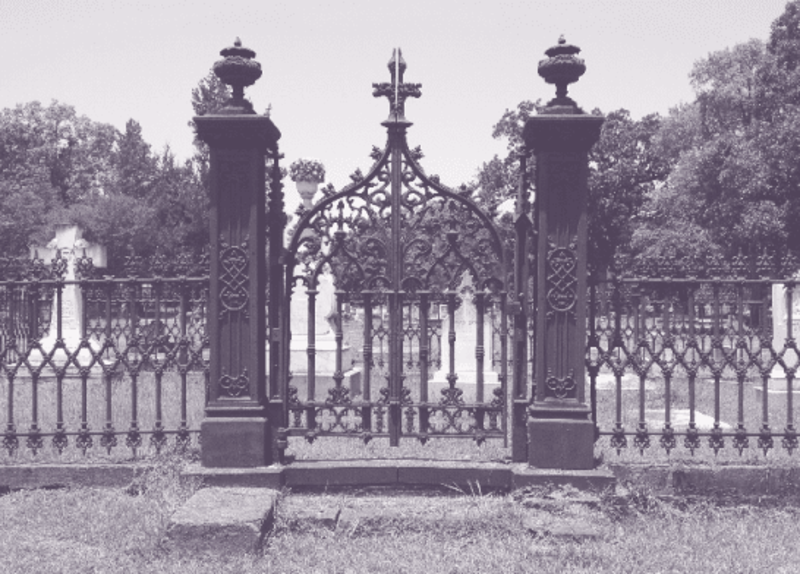This cemetery is located in the proximity of what was originally the Poste du Rapides, the first colonial military outpost in the area (c. 1770). The Poste du Rapides grew to become present day AlexandriaPineville. Burial grounds were established on the cliffs above the river at the Grand Rapids to avoid flooding of the graves. Etienne Marafret Layssard was designated as commandant of Rapides on February 12, 1770, and thus began the Poste du Rapides. No marked graves, however, have survived from this time period. The oldest marked burial in the Rapides Cemetery dates back to 1809, belonging to that of Pierre Baillio, son of Pierre Baillio II, founder of the present day Kent House. Ennemond Meuillion, Revolutionary War veteran and commander of Post du Rapides in 1803, is also buried here, as well as many distinguished families, early settlers of Central Louisiana, and veterans of all U.S. wars. The Rapides Cemetery is the oldest public cemetery in Central Louisiana. Sometime after 1774 and before May 19, 1798, the Rapides Cemetery tract of land was designated and used as a public burial ground when Ignace Mailloux ceased to reside on the property. It contains some of the finest examples of 19th century ornamental cast iron fence in the state, and the only documented remaining examples in Rapides Parish. Many of the grave markers and structures throughout the cemetery indicate architectural pretension due to design and materials used, particularly imported stone.

